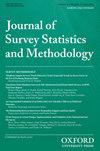Estimating the Size of Clustered Hidden Populations
IF 1.6
4区 数学
Q2 SOCIAL SCIENCES, MATHEMATICAL METHODS
引用次数: 0
Abstract
Successive sampling population size estimation (SS-PSE) is a method used by government agencies, aid organizations, and researchers around the world to estimate the size of hidden populations using data from respondent-driven sampling surveys. SS-PSE addresses a specific need in estimation, since many countries rely on having accurate size estimates to plan and allocate finite resources to address the needs of hidden populations. However, SS-PSE relies on several assumptions, one of which requires the underlying social network of the hidden population to be fully connected. We propose two modifications to SS-PSE for estimating the size of hidden populations whose underlying social network is composed of disjoint clusters. The first method is a theoretically straightforward extension of SS-PSE, but it relies on prior information that may be difficult to obtain in practice. The second method extends the Bayesian SS-PSE model by introducing a new set of parameters that allow for clustered estimation without requiring the additional prior information. After providing theoretical justification for both novel methods, we then assess their performance using simulations and apply the Clustered SS-PSE method to a population of internally displaced persons in Bamako, Mali.估计聚类隐藏种群的大小
连续抽样人口规模估计(SS-PSE)是世界各地的政府机构、援助组织和研究人员使用的一种方法,利用受访者驱动的抽样调查数据估计隐藏人口的规模。SS-PSE解决了估计方面的具体需要,因为许多国家依靠准确的规模估计来规划和分配有限的资源,以满足隐藏人口的需要。然而,SS-PSE依赖于几个假设,其中一个假设要求隐藏人群的潜在社会网络完全连接。我们提出了对SS-PSE的两种修改,用于估计潜在社会网络由不相交的集群组成的隐藏群体的大小。第一种方法在理论上是SS-PSE的直接扩展,但它依赖于在实践中可能难以获得的先验信息。第二种方法通过引入一组新的参数来扩展贝叶斯SS-PSE模型,这些参数允许在不需要额外先验信息的情况下进行聚类估计。在为这两种新方法提供了理论依据之后,我们利用模拟评估了它们的性能,并将聚类SS-PSE方法应用于马里巴马科的国内流离失所者群体。
本文章由计算机程序翻译,如有差异,请以英文原文为准。
求助全文
约1分钟内获得全文
求助全文
来源期刊
CiteScore
4.30
自引率
9.50%
发文量
40
期刊介绍:
The Journal of Survey Statistics and Methodology, sponsored by AAPOR and the American Statistical Association, began publishing in 2013. Its objective is to publish cutting edge scholarly articles on statistical and methodological issues for sample surveys, censuses, administrative record systems, and other related data. It aims to be the flagship journal for research on survey statistics and methodology. Topics of interest include survey sample design, statistical inference, nonresponse, measurement error, the effects of modes of data collection, paradata and responsive survey design, combining data from multiple sources, record linkage, disclosure limitation, and other issues in survey statistics and methodology. The journal publishes both theoretical and applied papers, provided the theory is motivated by an important applied problem and the applied papers report on research that contributes generalizable knowledge to the field. Review papers are also welcomed. Papers on a broad range of surveys are encouraged, including (but not limited to) surveys concerning business, economics, marketing research, social science, environment, epidemiology, biostatistics and official statistics. The journal has three sections. The Survey Statistics section presents papers on innovative sampling procedures, imputation, weighting, measures of uncertainty, small area inference, new methods of analysis, and other statistical issues related to surveys. The Survey Methodology section presents papers that focus on methodological research, including methodological experiments, methods of data collection and use of paradata. The Applications section contains papers involving innovative applications of methods and providing practical contributions and guidance, and/or significant new findings.

 求助内容:
求助内容: 应助结果提醒方式:
应助结果提醒方式:


